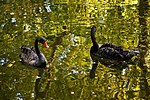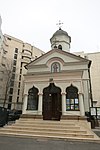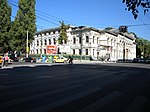Apostolic Nunciature to Romania
Apostolic Nuncios to RomaniaDiplomatic missions of the Holy SeeLists of ambassadors to RomaniaRoman Catholic biography stubsRoman Catholic clergy stubs ... and 1 more
Romania stubs
The Apostolic Nunciature to Romania the diplomatic mission of the Holy See to Romania. It is located, in Bucharest. The current Apostolic Nuncio is Archbishop Miguel Maury Buendía, who was named to the position by Pope Francis on 5 December 2015. The Apostolic Nunciature to the România is an ecclesiastical office of the Catholic Church in Romania, with the rank of an embassy. The nuncio serves both as the ambassador of the Holy See to the President of Romania, and as delegate and point-of-contact between the Catholic hierarchy in Romania and the Pope.
Excerpt from the Wikipedia article Apostolic Nunciature to Romania (License: CC BY-SA 3.0, Authors).Apostolic Nunciature to Romania
Strada Pictor Constantin Stahi, Bucharest
Geographical coordinates (GPS) Address Nearby Places Show on map
Geographical coordinates (GPS)
| Latitude | Longitude |
|---|---|
| N 44.439027777778 ° | E 26.086 ° |
Address
Strada Pictor Constantin Stahi 5-7
010188 Bucharest (Sector 1)
Romania
Open on Google Maps








